Picture your favorite waterway. It could be a neighborhood creek your dog loves to splash in when you go for a walk. A shaded stream where you taught your kids the art of fishing. Or a slow-flowing river where you kayak with friends every Labor Day weekend.
Streams and rivers are the threads that tie our country together, not just through exploration but in our everyday reliance on these waters. Small streams flow to drinking water supplies for 117 million Americans – that’s one-third of our population. We fish, swim, and boat on these waters. Clean water sustains healthy communities, and companies large and small depend on clean water for healthy crops, a robust outdoor recreation economy, and economic growth.
Yet Americans have less information about the health of local streams and rivers than they do about the latest celebrity marriages. The majority of streams across the country are not regularly tested for water quality – or ever tested at all. What’s worse, the information we do have about stream health shows declines in water quality across the country.
But It Looks Clean
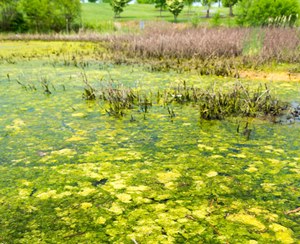
Our country has made great progress in stemming industrial pollution since the Clean Water Act was passed in 1972. It’s been decades since the Cuyahoga River caught fire for the last time. With all this progress, haven’t our water quality problems been solved?
In a word: no.
Threats to water quality today are just as serious as in decades past – they’re just harder to see. Polluted runoff from farm fields, parking lots, industrial sites, mining and extractions sites, and residential communities across the country flows unchecked and untreated into streams and rivers, carrying animal waste, bacteria, pesticides, fertilizers, heavy metals, and other pollutants through our communities. Sometimes we can see the effects, such as massive algal blooms that kill fish and pollute drinking water, but often it can be hard to tell where this water pollution starts.
There is limited information about stream health and water quality from the agencies tasked with protecting our waters, and the information they do have can be hard to find and hard to understand. Based on data available from the Environmental Protection Agency (EPA), our research shows that 80 percent of streams across America are not adequately monitored for pollution. Of the fraction of streams that are monitored, more than half do not meet basic safety standards for fishing, swimming, or as sources of drinking water.
With more than 3.5 million stream miles across the United States, testing water quality in every stream, every year, is labor intensive. Most state and local government agencies do not have the resources to meet this need. That’s why the Izaak Walton League launched the Clean Water Challenge: to engage communities across America in closing the information gap and ensure citizens have access to more timely water quality data collected in more locations.
Clean Water for America
At our 2017 national convention in July, the League launched the Clean Water Challenge. Our goal is to mobilize and train volunteers to monitor 100,000 more stream sites nationwide for pollution by 2022.
To succeed, the League needs to develop new partnerships, offer a variety of entry points for people to get involved, train more volunteers to become stream monitors, and expand monitoring options to assess specific water-quality problems. The good news is that we are well-positioned to accomplish all of this and more.
The Izaak Walton League literally “wrote the book” on citizen-based stream monitoring. In 1969, the League launched Save Our Streams (SOS), a program that gives volunteers simple tools to test water quality in local streams. This model has been used by water monitoring programs across the country, and it is gaining additional interest at the local, state, and national levels today.
The Clean Water Challenge provides an opportunity to expand Save Our Streams to many more communities. However, the League’s goal is not to simply monitor more streams. Working together, we can harness the Clean Water Challenge to improve water quality across the country, raise the League’s visibility at all levels, and engage new audiences in on-the-ground conservation work.
Improve Water Quality
With training and support from the League, anyone can volunteer to collect data in a scientifically sound way that can be used by the community, the Izaak Walton League, and local and state officials to investigate and solve water pollution problems. Although large problems require a response by local or state agencies, volunteer groups can take many steps at the local level to improve water quality locally and nationally.
Raise League Visibility
Every aspect of the Clean Water Challenge offers opportunities to raise the League’s visibility at the local, state, and national levels and leverage our strengths as community-based problem solvers. By engaging League chapters and members across the country in a coordinated national effort, we can achieve compelling results together that will help attract media coverage and recognition in our communities. Communication will be the key to achieving visibility – communicating both within the League and externally with media outlets and local communities.
Engage New Volunteers
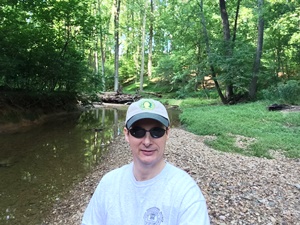
As the saying goes, “many hands make light work.” The Clean Water Challenge offers an opportunity to engage new audiences in the League’s conservation efforts. With a range of entry points into the Challenge, including “Stream Selfies” and stream clean-ups, chapters can use the Challenge to build new partnerships, engage new volunteers, coordinate volunteers, collect and track data, and use that data to inform local decision-makers and re-engage members. Similarly, the national organization is working to build new partnerships to engage volunteers from other organizations to help achieve the Challenge goals.
How do we achieve these goals? By taking small steps forward in the coming year.
Ways To Get Involved
We developed a range of ways to get involved with the Clean Water Challenge to match every age and level of interest. If your idea of enjoying the outdoors is a backyard barbecue, a quick Stream Selfie might be right up your alley. If you want to make a big difference with a simple project, consider a stream clean-up. If you can commit a little more time and don’t mind getting your feet wet, you could be a new stream monitor!
League staff created new resources to help League members and chapters in these efforts. Resources in the Clean Water Challenge “Getting Started” Toolkit can be used immediately as-is or customized to fit chapter needs. The toolkit was handed out to attendees at our 2017 national convention and mailed to every chapter president and Save Our Streams coordinator who could not attend convention. After convention, we also e-mailed a link to the toolkit to every League member for whom we have an e-mail address. You can download individual resources or access the full kit on the League's website.
Stream Selfies
We are asking every League member to take a photo by a stream they care about, answer a few questions, and post the photo to our national map of stream sites. For stream sites being monitored today, the Stream Selfie map will provide a powerful visual representation of the impact volunteers have in communities nationwide. This map will also provide a national inventory of streams that could be monitored in the future by League members and citizen volunteers.
Put your favorite stream – or one you’re worried about – on the map. Encourage your fellow chapter members, friends, families, and community to get involved as well. Taking photos with streams is a great way to engage people in the outdoors.
Visit Stream Selfie for tips and more details.
Resources for Chapters – Materials in the Challenge toolkit related to individual Stream Selfies include handouts, sample content, and graphics to be used on websites, in newsletters, and on social media channels.
Anyone can take a Stream Selfie – and hundreds of people have posted their selfies on our nationwide map, individually and in groups. Some chapters are already exploring the use of Stream Selfie as a promotional tool to engage the local community. Stream Selfies can also be a fun group activity!
Selfie Walks
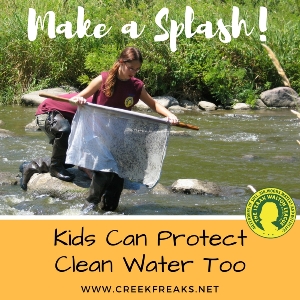
Consider hosting a community “Selfie Walk.” The walk could begin or end on chapter grounds (if applicable) and introduce the community to the Izaak Walton League and everything your chapter has to offer (stream sites included).
Selfie Walks also offer opportunities to develop local partnerships. For example, your chapter could invite a naturalist to talk about local plants and animals during a stream walk or someone from the Historical Society to speak about how local streams and rivers shaped the history of your town.
Resources for Chapters – The League developed tools to promote and leverage Selfie Walks, including media alerts and press releases, sample content, and graphics to be used on websites, in newsletters, and on social media channels.
Stream Clean-Ups
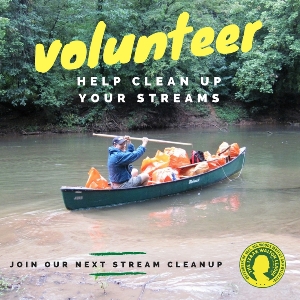
League members are working with other volunteers across the country to clean up streams in their communities. Stream clean-ups provide an easy way to get the community – including young people and families – involved in the Clean Water Challenge and make them aware of the great work your chapter is doing!
Clean-ups are about more than making communities look good. Taking trash out of streams also helps keep local waters healthy. When trash accumulates in streams and rivers, it can damage fish habitat, block out sunlight vital to underwater plants, and deplete oxygen in the water (which all aquatic animals need to survive). Plastic pollution breaks apart in water and releases toxins into your waterways, and fish and wildlife can die from mistakenly eating plastics and other trash. Sharing information about the damage caused by trash in streams can increase interest in clean-ups among potential volunteers – and the media. One way chapters can use local Stream Selfies is to identify target locations for stream clean-ups.
Stream clean-ups offer a great starting point for potential corporate partnerships. Companies in your community may encourage their employees to volunteer for projects. Look to local stores not only for cash donations to support your efforts but also material donations (gloves, bags, safety vests) and employee volunteers.
Resources for Chapters – Resources in the Challenge toolkit to help promote chapter stream clean-ups include media alerts and press releases, sample content, and graphics to be used on websites, in newsletters, and on social media channels, and tips on using the Chapter Accomplishment tool (see below).
Publicizing clean-up results is just as important as promoting the event beforehand. The League created an online Chapter Accomplishments tool (login required) to help chapters track their accomplishments and cumulative results, including for stream clean-ups. This information will be helpful for local media coverage and grant applications as well as engaging chapter and community members. Click the Officer Tools tab at the top of the League website to access this resource. These results also allow the national organization to add up chapter totals for a picture of our national impact. Chapter results are the “raw material” needed to raise the League’s visibility through national press releases and other communications. If you have questions about using the online Chapter Accomplishments tool, e-mail members@iwla.org.
Need tips for starting a stream clean-up? The IWLA Chapter Manual offers guidance on this activity and more. (Login is required to access the electronic file.)
Local Partnerships
Other groups in your community share the League’s passion for clean water and citizen-led conservation efforts. Every partnership begins with an initial meeting. A great place to start is organizations your chapter is already working with, such as community and faith-based organizations, local watershed associations, Scout troops, or a canoeing club.
Involving the local community is critical to the success of any volunteer stream monitoring effort, especially as the League works to expand the number of stream sites monitored across the country. It is important to not only share information about potential water quality issues with partners but also to get feedback on why community members care about specific waterways.
Resources for Chapters – To help chapters promote the Clean Water Challenge to other community organizations, the toolkit includes fact sheets, Clean Water Challenge logos, tips and tactics for reaching out to potential partners, as well as graphics to be used on websites, in newsletters, and on social media channels.
Stream Monitoring
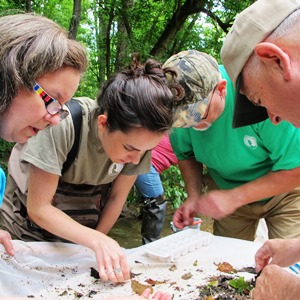
The League was founded by sportsmen concerned about water pollution and its impact on the outdoor pursuits they loved. Since that day in 1922, clean water has remained a priority for our organization.
The League was one of the first groups to recognize that with the right tools and training, any citizen can collect scientifically valid information about water quality. For almost 50 years, the League’s Save Our Streams (SOS) program has helped volunteers assess and report water quality conditions in local creeks and streams, making it one of the most successful citizen science programs in the country.
Volunteers do not need a background in science or expensive equipment to be successful stream monitors, and monitoring can involve as little as 16 hours of your time over the course of the year. While the time commitment is small, the impact is huge! Volunteers can provide important information about the health of waterways to state and local agencies, neighbors, and the media. Volunteer groups can also use this information to plan restoration projects, track changes in stream health over time, and advocate locally to improve and protect water quality.
Volunteer stream monitors can evaluate four different aspects of stream health:
- Biological: Aquatic macroinvertebrates live on, under, and around rocks and sediment on the bottoms of rivers and streams. They vary widely in their tolerance for pollution, so the presence – or absence – of certain macroinvertebrates can tell monitors whether or not a stream is healthy. The League’s Aqua Bugs app can help monitors accurately identify the macroinvertebrates they find.
- Chemical: Testing the chemical components of a stream – including pH, dissolved oxygen, and nutrients – provides a good sense of overall water quality. It is also valuable in pinpointing specific areas of concern, such as nitrogen runoff from farm fields and suburban lawns.
- Physical: Information about the physical characteristics of a stream – such as erosion, stream bank vegetation, and algae growth – provides clues about possible sources of water quality issues.
- Flow: The amount of water running through a stream plays a factor in water quality. Tracking flow rates gives stream monitors more information about changes in runoff over time.
Resources for Chapters – The Clean Water Challenge toolkit includes targeting resources to help chapters succeed with stream monitoring, including stream monitoring instructions, Aqua Bugs flier, media alerts and press releases, Save Our Streams logo and graphics to be used on websites, in newsletters, and on social media channels.
You can also find stream monitoring video tutorials, data forms and instructions, equipment lists, and tips for beginning stream monitors on the League website.
Volunteers using other protocols to monitor stream health can also add new sites to our 100,000 Clean Water Challenge goal. This effort is not limited to the League’s Save Our Streams program.
Sharing Results
Publicizing results after an event is just as important as promoting the event ahead of time. In addition, the national organization can use local results from chapters across the country to help raise the visibility of the League nationally. Here’s where you can share your successes:
- Share Selfie Walk results by e-mailing details and group photos to sos@iwla.org.
- Track stream clean-up totals using the Chapter Accomplishments tool, which allows you to keep running totals of trash collected and volunteers engaged. You can find this resource in the Officer Tools section of the League website.
- Enter your stream monitoring data into the Save Our Streams national database.
- Share solutions to local pollution problems you discovered through stream monitoring. Your successes will encourage new stream monitors. E-mail details and photos to sos@iwla.org.
Resources for Chapters – The Clean Water Challenge toolkit can help you share results locally and includes press releases, instructions on how to upload stream monitoring data, tips on the Chapter's Accomplishments tool, and graphics to be used on websites, in newsletters, and on social media channels.
National Goals
As we work together to reach our Clean Water Challenge goals, the national organization will proactively support chapters, members, and other volunteer groups. We are committed to achieving specific results by the 2018 national convention to ensure the successful launch of the Challenge. Over the next 12 months, the national organization will focus specifically on press outreach, building partnerships, supporting volunteers locally, using social media channels to promote the Challenge, and connecting with chapters to share results.
Press Outreach
The national organization is implementing an aggressive communications strategy using Stream Selfies, volunteer monitoring data, and other local results to promote the Clean Water Challenge to media outlets, policymakers, and communities nationwide.
To engage the media, we need information from chapters and partners about how many citizens are monitoring streams, monitoring results (whether water quality is good or bad), and compelling stories about why these streams matter locally. Results and local stories are the essential raw materials of a successful media campaign – and we need our members and chapters to provide that information. Then it’s our job to use it.
National Partnerships
League staff are working to foster partnerships with other national organizations that can help grow the League’s volunteer base nationwide.
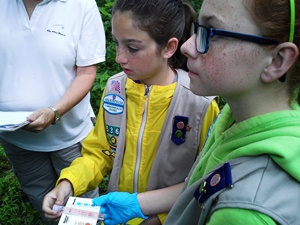
Girl Scouts of the USA: As part of a nationwide initiative to promote citizen science, the Girl Scouts national organization selected the League’s Stream Selfie as one of seven projects it is promoting to 1.9 million Girl Scouts across the country. In an introductory video designed for Girl Scouts, League staff highlight how this project can help Scouts discover local waters, connect with others who care about clean water, and take action to improve water quality in their communities. Every Girl Scout who contributes to the Stream Selfie project is encouraged to take follow-up steps to improve water quality locally, including organizing stream clean-ups and volunteer stream monitoring teams, so this is a good jumping off point for engaging Girl Scouts in additional clean water efforts.
Boy Scouts of America: The League put the Clean Water Challenge in front of thousands of Boy Scouts and their parents and leaders at the Boy Scouts of America National Jamboree in July. The 2,500 Scouts who visited our exhibit on the Conservation Trail took home information about Stream Selfies, our Aqua Bugs app for identifying macroinvertebrates, and how to get involved in stream monitoring in their communities. League staff also provided a handout to Scout leaders that matched up stream monitoring with specific Boy Scout merit badge and award requirements, providing further incentive for Scouts to get involved. Chapters working with Scouting units can start with Stream Selfie to engage Scouts in water-based projects at the chapter and in the community.
Waterkeeper Alliance: The League is working with the Waterkeeper Alliance to provide training and support to the more than 190 Riverkeeper organizations dedicated to protecting local waterways. League staff attended the international Waterkeeper Alliance annual meeting earlier this year to highlight the Clean Water Challenge. Starting this fall, League staff will be training hundreds of volunteers and dozens of Riverkeeper staff across the country on Save Our Streams to continue expanding the volunteer monitoring network from coast to coast.
Hands-On Training and Support
The League added new staff capacity to support members and chapters with stream monitoring training and other efforts. So far this year, staff traveled to nearly 20 states, from New York to California and places in-between – including Iowa, Utah, West Virginia, and Florida – to promote the Clean Water Challenge, train volunteer stream monitors, and raise the visibility of the League in the conservation community. Through our train-the-trainer program, staff are expanding our network of certified trainers to help the League reach more volunteers and citizen scientists.
League staff can travel to your community to train and support stream monitors and help chapters build partnerships with other organizations to engage new volunteers. Training workshops are scheduled this fall in Maryland, Pennsylvania, and Virginia. Visit our website for information on upcoming trainings or to request a workshop in your community.
Social Connections
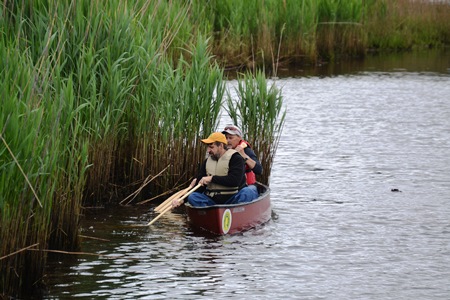
The League continues to use a range of social media channels to reach out to members, supporters, and other people interested in conservation and outdoor recreation. In 2017, we are using Stream Selfie to test the effects of “boosting” Facebook posts to reach a larger audience beyond the 4,700 people currently following the League on Facebook.
The results to date are promising. A boosted Facebook post in April reached more than 26,000 people (compared with a daily average of 2,451) and 779 people engaged with the content (clicked, commented, liked). In June, a boosted post reached 17,150 people and engaged 576 people. Staff will continue to explore this and other ways to cost-effectively raise the League’s visibility through social media channels.
Selfie Connections
Stream Selfies can link the League with thousands of potential volunteers across the country who care about clean water. As more Selfies are added to the League map, staff will connect Selfie takers interested in volunteering further with League chapters and partner organizations that have joined the Clean Water Challenge. (This will be restricted to participants who opted in to receive information from the League.) In addition, chapters can share local Selfies on social media to help recruit volunteers and raise awareness of water quality issues.
Success Stories
The most compelling stream monitoring stories are about volunteers – why they first got involved, what they found through stream monitoring, and how they helped solve local pollution problems. League staff will be reaching out to members, partners, and other community volunteers to find these stories and use them to engage new volunteers in the Clean Water Challenge and promote the Challenge to the media. Please share your success stories with us, from forming new partnerships and engaging new volunteers to working with local government agencies to identify and solve water quality problems. E-mail sos@iwla.org and League staff will contact you for more details.
These are just some of the actions we’ll take in year one to engage more Americans in the Clean Water Challenge. Together, we can monitor more streams and improve water quality across America. Let’s get started!